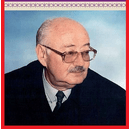Steven Avery
Administrator
Nikolaos Sotiropoulos (1934-2014)
Timeline of Orthodoxy in Greece
https://en.wikipedia.org/wiki/Timeline_of_Orthodoxy_in_Greece_(from_2008)#cite_note-133
Timeline of Orthodoxy in Greece
https://en.wikipedia.org/wiki/Timeline_of_Orthodoxy_in_Greece_(from_2008)#cite_note-133
Nikolaos Sotiropoulos was born on 15 April 1934 in Palaiopirgos, in the Nafpaktia region of Greece. He received his degrees from the University of Athens as a Professor of Theology and Professor of Literature, with honors. He became the student and spiritual son of Metropolitan Augoustinos Kantiotes (1907-2010), the Bishop of the Holy Metropolis of Florina, Prespai, and Eordaia in northern Greece, and a defender of traditional Orthodoxy both in Greece and abroad. Sotiropoulos published many volumes, including Interpretation of the New Testament (ΕΡΜΗΝΕΙΑ ΚΑΙΝΗΣ ΔΙΑΘΗΚΗΣ), and Interpretation of the Acts of the Apostles (ΕΡΜΗΝΕΙΑ ΤΩΝ ΠΡΑΞΕΩΝ ΤΩΝ ΑΠΟΣΤΟΛΩΝ), as well as many others. He was a founder and director of the Orthodox missionary brotherhood "The Cross" ("O Stavros") for many years (which assumed the form of a brotherhood in 1966). He also went on speaking tours to address Hellenic communities throughout Europe, America, Canada and Australia. He was excommunicated for the rest of his life by the Holy Synod of Constantinople in July 1993, for openly criticizing Archbishop Stylianos (Harkianakis) of Australia in 1988, and for his "divisive" behaviour.[101][102] He died on 28 August 2014 in Patras. He was unmarried and did not have any direct descendants. His funeral was held on 29 August 2014, at the Monastery of the Entrance of the Virgin Mary, in the village of Myrtia in Aetolia-Acarnania, in the presence of the Bishops of Aetolia and Acarnania (Kosmas Papachristou), Piraeus (Seraphim Mentzenopoulos), Gortynos (Ieremias Foundas), and others.
Last edited:


